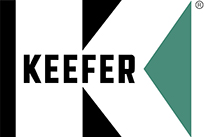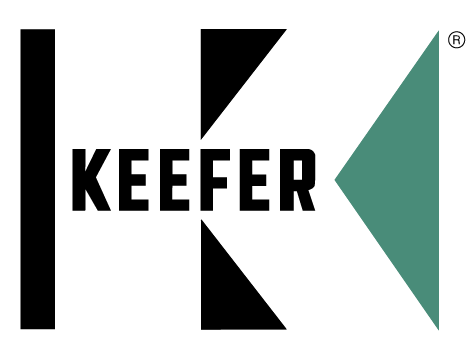“Treatment without prevention is simply unsustainable.”
– Bill Gates
We’re often asked for examples of how we’ve used Preventive Law to help companies minimize risks. We’re not sure if it’s because people generally love a good story filled with gory details (giving them reassurance that things could be worse) or if it’s the happy ending they’re after (filling them with hope). Either way, here are a few real-world examples of how we’ve helped product manufacturers avoid disaster and operate happily ever after.
What the Shell?
We were engaged by a product manufacturer which was looking to quickly become a public company and raise capital through merging with an existing shell company. Unfortunately, this client had conducted very little diligence on the shell and individuals involved. Like most businesses, it had trusted its new business partners, one of whom was a neighbor and friend of the CEO, who had been reassuring the executive team that this merger would help the company accomplish its goals quickly.
Right away we began the due diligence process to get up to speed on the players involved, determine potential exposure to unnecessary risks in this venture, and ultimately to confirm whether or not the shell was “clean” enough to avoid problems with the Securities Exchange Commission, among others. That’s when we noticed some red flags waving.
After digging a little deeper, we discovered this shell had all the hallmarks of a sham and that the individuals offering it had a history with these types of shady transactions. It was clear that if the company had continued down its current path, it could have been exposed to significant civil and even criminal liability.
Needless to say, the executive team immediately ended discussions with its “partners” and was grateful to have avoided what could have otherwise been a business-ending catastrophe. I believe the CEO’s exact words were, “Wow, thank you, man . . . that’s why we brought you on board!” We’ve since been strategizing with the executive team on less-risky means of raising capital, as well as commercial contracting, supply chain operations and risk transfer issues.
Just Rub Some Dirt on It
When a national manufacturer was looking to establish a Pacific Northwest presence, the CEO came to us for assistance in reviewing some real estate agreements. The company was under contract for a large parcel of brownfield property and had trusted the Phase I environmental report finding “no recognized environmental conditions” (or “RECs”). The diligence period was set to expire in just a couple weeks, and the company would then be locked into closing.
We took a closer look at the Phase I report, and then talked to relevant parties to learn more about the property and transaction. After a few days, it became apparent there were in fact significant environmental red flags surrounding the property, and the company needed to get out of the contract. We challenged the Phase I outfit as to the presence of leaking drums, underground storage tanks, fly ash piles, and an oil/water separator on the property, all of which had been noted but tucked away toward the end of the report and disregarded. We then pushed the outfit to revise the Phase I report to accurately reflect these conditions as RECs. This strategy enabled us to make a strong argument to back out of the agreement and avoid purchasing a property with hazardous environmental conditions.
Fortunately, we were able to terminate the agreement and then help our client identify a less-risky parcel to set up operations. We worked with the company to develop and negotiate the necessary contracts and agreements to facilitate a successful closing.
Going Off the Rails on a Crazy Train
Another one of our product clients, with factories in multiple states, had significant union involvement. Relations had become strained over the prior couple years with the union filing numerous unfair labor practice charges, largely to prove a point.
Prior to our involvement, the company had engaged a large law firm to defend the charges, racking up hundreds of thousands in legal fees in the process. This firm had even increased rates and made questionable staffing choices without first discussing with the company. The senior partner had further recommended taking the matter through trial and then appeals, despite the low probability of success, which would have resulted in the company spending several hundred thousand more in fees to this firm. The kicker was that trial was set in less than 30 days.
We were engaged by the company and immediately interviewed the firm to better understand the ongoing litigation strategy. Unfortunately, these issues were just the tip of the iceberg. Among other things, we learned there had been previous opportunities to settle at a fraction of what had been spent in fees, as well as the possible existence of insurance coverage to offset some of the losses, which had been missed. It did not appear the company’s best interests were being protected.
We quickly replaced this firm with a more business-forward firm, working closely with the new attorneys to pivot away from trial strategy and toward settlement discussions. In the meantime, we notified the insurance carrier of a provision in the policy that allowed coverage for a portion of the fees and settlement given the nature of the claims being made. Long story short, we successfully settled all of the pending charges for a fraction of what would have been spent litigating to ultimate conclusion, with over half of those sums reimbursed by insurance proceeds.
We then helped the company work productively with the union to rebuild trust and get the relationship back on solid footing. This involved collaborating with the company to develop internal policies to minimize the likelihood of this circus happening again. After a few months, the relationship had improved to a point where disputes were being handled amicably and without need for involvement by the National Labor Relations Board.
These are just a few real-world examples of how Preventive Law was a “pound of cure” for businesses. By looking around corners and taking the appropriate precautionary measures, companies can avoid significant exposure.
KEEFER is your ounce of prevention.





















